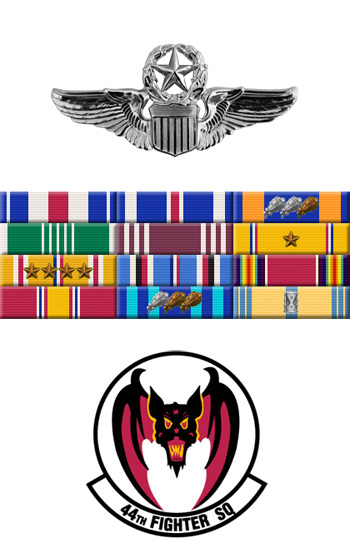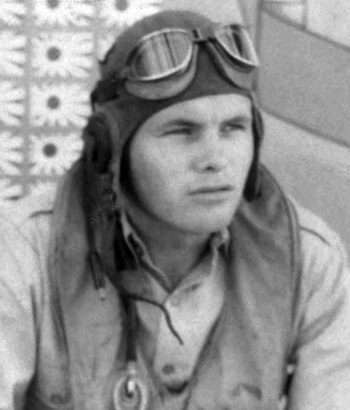
|
Cyrus R. Gladen |
 |
|||
| Rank, Service | ||||
Lieutenant Colonel O-5, U.S. Air Force |
||||
| Veteran of: | ||||
|
||||
| Tribute: | ||||
Cy Gladen was born on November 4, 1920, in Bemidji, Minnesota. He enlisted in the U.S. Army on January 25, 1940, and was trained as a Chemical Warfare Specialist before transferring to the U.S. Army Air Forces as an aircraft mechanic on July 1, 1941. Gladen was stationed at Wheeler Field, Hawaii, when the Japanese attacked on December 7, 1941, and he entered the Aviation Cadet Program on January 25, 1942. He was commissioned a 2d Lt and awarded his pilot wings at Moore Field, Texas, on August 5, 1942, and then joined the 72nd Fighter Squadron of the 18th Fighter Group in Hawaii. Lt Gladen transferred to the 44th Fighter Squadron of the 18th Fighter Group at Guadalcanal in March 1943, and he was credited with destroying 5 enemy aircraft in aerial combat, plus 2 probables and 3 damaged, before returning to the U.S. in February 1944. His next assignment was as a P-38 Lightning instructor pilot with the 432nd Army Air Force Base Unit at Portland, Oregon, where he served from April 1944 to March 1945, followed by service with the 422nd Army Air Force Base Unit at Tonopah, Nevada, from March to September 1945. Maj Gladen then served briefly at Ontario Army Air Base and March Field, California, before leaving active duty on January 27, 1946. He then joined the Air Force Reserve, and served with Headquarters 4th Air Force at Hamilton AFB, California, from January 1946 to April 1948, and then with the 746th Bomb Squadron at Troutdale, Oregon, from April 1948 to June 1949. He was assigned back to 4th Air Force from June 1949 to December 1951, and then with the 9417th Air Reserve Squadron at Medford, Oregon, until October 1962, when he joined the 9414th Air Reserve Squadron at Salem, Oregon. His final assignment was as Commander of the 9414th ARS from February 1963 until his retirement on May 1, 1968. Cy Gladen died on February 11, 1998, and was buried at the Willamette National Cemetery in Portland, Oregon. |
||||
|
||||

